 All Entries in the "Travel" Category
All Entries in the "Travel" Category
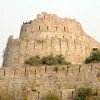
Tughlaqabad Fort
Tughlaqabad Fort was built by Ghiyas ud-Din Tughlaq, the ruler of Delhi Sultanate during 1321-25. The fort is a popular place to visit in Delhi.

Ghiyas ud-Din Tughlaq’s Tomb in Delhi
Ghiyas ud-Din Tughlaq was the ruler of the Delhi Sultanate (1320-25). Ghiyas ud-Din Tughlaq’s tomb is located on the Mehrauli Badarpur Road in Delhi.
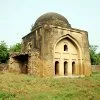
Siri Fort
Alauddin Khilji, the second ruler of the Khilji dynasty for the Delhi Sultanate, constructed the Siri Fort during 1297-1307. The objective of the Siri Fort was to protect the empire from the Mongol attacks.
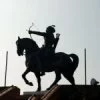
Qila Rai Pithora and Lal Kot
Lal Kot and Qila Rai Pithora are known as the first city of Delhi. Lal Kot was founded by Anangpal in the eighth century. It was expanded into Qila Rai Pithora by Prithviraj Chauhan in the twelfth century.
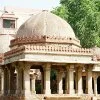
Hauz Khas
Hauz Khas, Delhi derives its name from the artificial lake, created in the fourteenth century to provide water to the residents of the Siri Fort city. The Hauz Khas Complex on the eastern and southern banks of the lake has Firuz Shah Tughlaq’s tomb, tombs of Tughlaq era, madrasa, assembly hall and mosque.
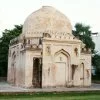
Monuments near the Hauz Khas Village
Hauz Khas in Delhi is a historically important area with many monuments belonging to the Tughlaq and Lodi periods. Most of these monuments are in an excellent state of preservation and give an insight into the architectural style of these periods.

Garden of Five Senses
The Garden of Five Senses is a fine garden in Delhi. It has been designed to stimulate and invigorate the five senses. The garden is located at the at Said-ul-Aizab village just off the Mehrauli Badarpur Road near the Saket Metro train station in Delhi.
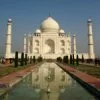
Golden Triangle Tour
The Golden Triangle Tour is a tour of the cities of Delhi, Agra and Jaipur in India. These three historical cities form a triangle and have the very best tourist places. The Golden Triangle Tour is a very popular tourist package.
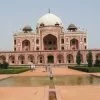
Tourist places in Delhi
Delhi is a historical city, having evolved with time. The top tourist places to see in Delhi are the Qutub Minar, Red Fort, Jama Masjid, Old Fort, National Zoological Park, Humayun's Tomb, India Gate, Bahá’í House of Worship, Akshardham Temple and the Lodi Gardens.
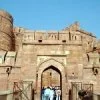
Tourist places in Agra
Agra is a major historical city in the Indian state of Uttar Pradesh. Agra is famous for the Taj Mahal, one of the seven wonders of the world. The other tourist attractions are the Agra Fort, I’tmad-ud-Daula’s Tomb, Akbar’s tomb and the nearby city of Fatehpur Sikri.

Tourist places in Jaipur
Jaipur, the pink city, is a very popular tourist destination. Jaipur is a very well planned city and has beautiful historical monuments, museums, parks and landscapes. Jaipur, along with Delhi and Agra, makes India's Golden Triangle Tour.
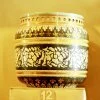
Central Museum, Jaipur
The Central Museum in Jaipur is located inside the Albert Hall. Formally opened in February 1887, the Central Museum has beautiful pieces of art and craft under the sections, Arms and Armour, Sculpture Gallery, International Art, Pottery Collection and Musical Instruments.
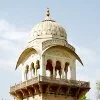
Albert Hall, Jaipur
Albert Hall is a historical building located in the Ram Niwas Garden in the city of Jaipur. Albert Hall was built in 1876-87 during the reign of Maharaja Sawai Madho Singh II. It was designed by the English architect Sir Samuel Swinton Jacob. Albert Hall houses the Central Museum.
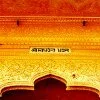
Nahargarh Fort
Nahargarh Fort is an eighteenth century fort situated in Aravalli hills close to the Jaigarh Fort in Jaipur. The fort is noted for Madhavendra Bhawan, a big palace inside the fort. The fort offers a bird's eye view of the city of Jaipur.

Jaigarh Fort
Jaigarh Fort is situated on top of the hill named Cheel Ka Teela (Hill of Eagles) in Jaipur. The fort has a cannon foundry, the Jaivana cannon and palaces. Since it is at a good height, it offers amazing views of the surrounding Aravalli Hills and the nearby Amber Fort.
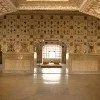
Amber Fort
Amber Fort, pronounced ä-mêr fort and also written as Amer Fort, is a sixteenth century fort located in the hilly town of Amer, about 11 kilometers from the city of Jaipur. It was built by Raja Man Singh, the Kacchwaha King of Amber and a celebrated Navratna in the court of Mughal emperor Akbar, in 1592.
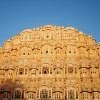
Hawa Mahal
Hawa Mahal is an iconic palace in the city of Jaipur built in 1799 by Maharaja Sawai Pratap Singh. Hawa Mahal has a unique facade with exterior color matching with the theme of pink city Jaipur and with 953 small windows.
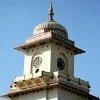
City Palace, Jaipur
City Palace, Jaipur is a complex of palaces and was the official residence of the Maharaja of Jaipur. The palace complex comprises of beautiful gardens, courtyards and buildings. City Palace is a top tourist destination.
Jantar Mantar, Jaipur
Jantar Mantar at Jaipur is an observatory with architectural instruments for astronomical measurements and observations. Jantar Mantar was built by Maharaja Sawai Jai Singh II during 1724-1735. Jantar Mantar at Jaipur is a UNESCO World Heritage Site.
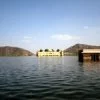
Man Sagar Lake and Jal Mahal
Man Sagar Lake is an artificial lake, about 400 years old, in the city of Jaipur. It was built as a dam to store water for the city's population. Jal Mahal is the Water Palace, situated in the middle of the lake. Jal Mahal was built by Maharaja Sawai Pratap Singh, the ruler of Jaipur during 1778-1803.
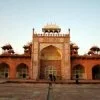
Akbar’s Tomb
Akbar’s Tomb is located in Sikandra, at the outskirts of the city of Agra in India. Akbar started building the Tomb in his lifetime around 1600. He was laid to rest here after his death in 1605. His son Jahangir completed the construction work between 1605-1613.
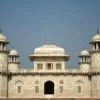
I’tmad-ud-Daula’s Tomb
I’tmad-ud-Daula’s Tomb is the tomb of Mirza Ghiyas Beg and his wife Asmat Begum. Mirza Ghiyas Beg came to India from Persia and joined the court of Mughal emperor Akbar. He rose in Akbar’s court and Akbar conferred on him the title I’tmad-ud-Daula, which means, the pillar of the State.
Agra Fort
Agra Fort is close to the Taj Mahal in the city of Agra. It gained importance as Akbar made Agra his capital in 1558 and rebuilt the fort. Agra Fort is well preserved and has beautiful palaces and courts.

Taj Mahal
Taj Mahal is a mausoleum built by the Mughal emperor Shah Jahan for his wife Mumtaz Mahal. Taj Mahal is one of the seven wonders of the world. It is visited by more than 11,000 tourists on an average day.

Fatehpur Sikri
Fatehpur Sikri is a historic city located about 37 km west of the city of Agra. Akbar made Fatehpur Sikri his capital in the year 1571. Fatehpur Sikri complements Agra with its own share of historical monuments, which are in an excellent state of preservation.
